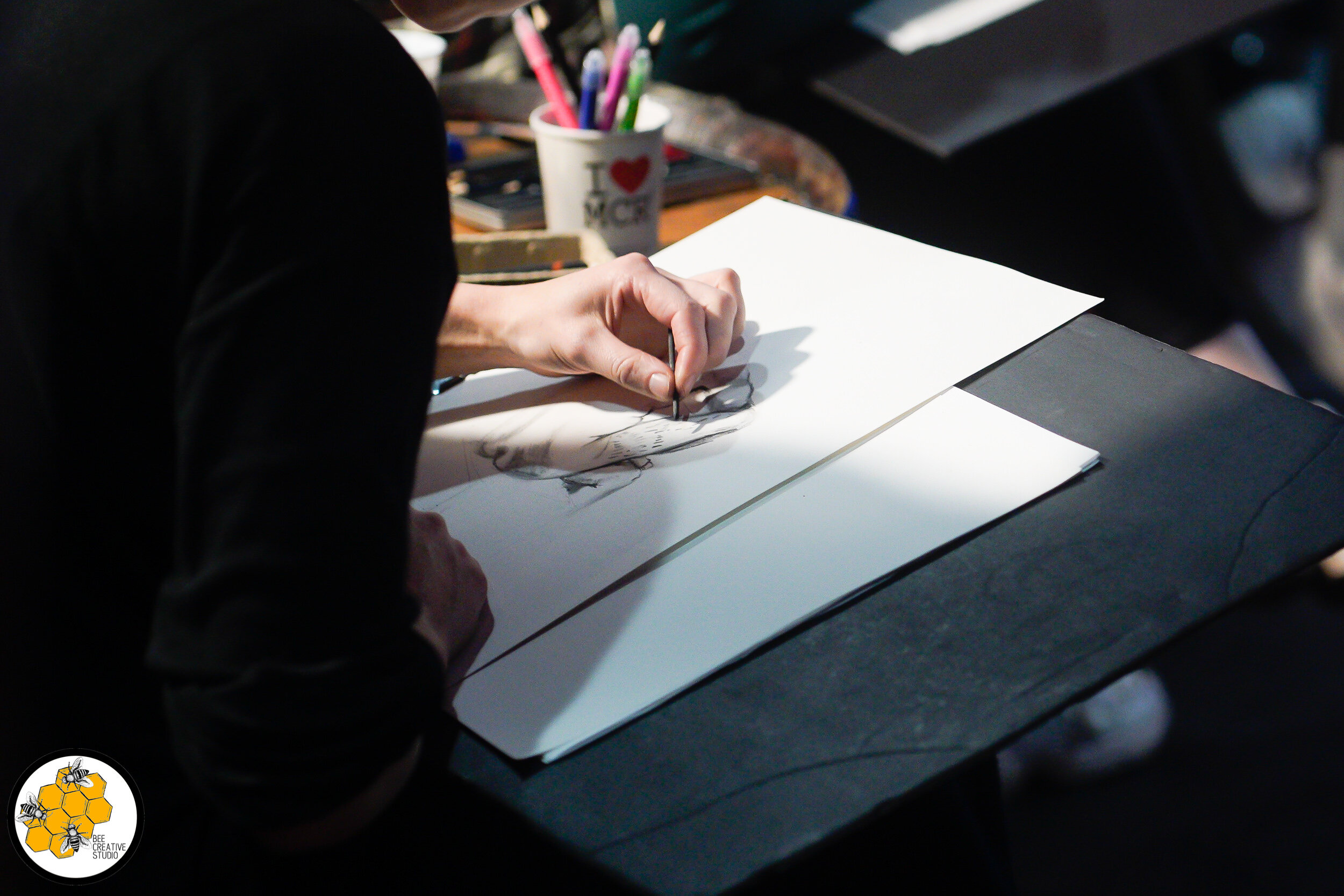Hours not years. Your speed of improvement is relative to the hours that you put in, not the months on years since you first started.
Start simple, repeat what works. When you begin life drawing it is important to find exercises that you enjoy and repeat them again and again. Mini-exercises such as blind contour drawing, drawing with the unorthodox hand and extending the reach of the arm, all present clear boundaries, intended to as warm-ups to a session and to break ‘bad habits’.
Learn to enjoy learning. Enjoy the exercise and the processes for the experience rather than the final outcome. It is interesting the vast majority of those new to drawing aim for their approach to be realistic. However, without developing our ability to learn to see the basic underlying shapes that make up even the most complex subjects, it is difficult to develop our ‘eye’ for the small interrelated shapes that make up the human body. It is a good idea when learning to draw to begin practising very basic shapes; a sphere, cone, cylinder and cube. By practising drawing these basic shapes you will begin to recognise that this is the basis of anything you draw from trees, to people. In much the same way you can use linear drawing exercises such as continuous line drawing, or contour drawing to loosen up and train your eye to view visualise these shapes as you draw.
Find a community. Learning to draw alongside other people is critical for support and inspiration. Our life drawing classes start off with some quick drawing poses to give you a quick overview of the model’s body in that pose. Using linear drawing techniques can allow you to really look at the figure and begin to understand the tiny changes in direction of form and contour. Indeed, many artist utilise this method of drawing to thinking across the whole figure to improve understanding of proportion and perception of the figure, so that they are able to see it more objectively.
In the next blog, I will talk about different linear drawing techniques and how they can help you to progress your drawing skills.
Nichola.

